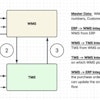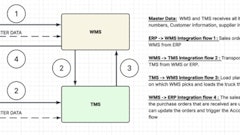
Product lifecycle management (PLM) is a $150 billion industry that powers the backbone of modern hardware development, but it’s still often overlooked in nearshoring conversations. As manufacturers face mounting tariff pressures, geopolitical volatility, and a renewed push toward localization, many are turning to regionalized production to reduce risk, shorten lead times, avoid tariffs, and regain control over logistics.
Operationalizing nearshoring, however, is complex. Teams must identify and qualify new suppliers, share product and manufacturing data without delay, and adapt workflows to meet regional requirements—all without introducing risk or slowdowns.
PLM serves as the record system for these transitions. It connects product design (CAD), bill of materials (BOM), supplier data, compliance requirements, and manufacturing documentation into a unified platform. This ensures all stakeholders—from design engineers to supply chain managers—work from a single source of truth.
PLM software enables companies to manage transitions dynamically. As teams onboard new suppliers, shift component sourcing, or update documentation for regulatory compliance, all changes are tracked and version-controlled across the lifecycle. This level of coordination is critical, especially in nearshoring, where small missteps in data alignment or communication can lead to costly delays or quality issues.
PLM at the frontlines of nearshoring
Modern PLM platforms are key to turning nearshoring from strategy into execution. Here are some of the most valuable applications:
● Supplier management –Nearshoring often requires sourcing new vendors under tight timelines. PLM systems centralize supplier records so teams can rapidly evaluate, onboard, and monitor nearshore partners. Built-in workflows ensure nothing falls through the cracks, from NDA signatures to first-article inspections.
● Product data management –PLM serves as a single repository for all product-related information, including CAD files, BOMs, and work instructions. When production shifts to new locations, nearshore suppliers get access to the most current and approved data, reducing the risk of manufacturing errors, misaligned specs, or version control issues.
● Cross-functional collaboration –Successful nearshoring demands tight coordination between engineering, supply chain, and manufacturing teams. PLM enables real-time collaboration by giving all stakeholders access to the same product data and workflows. Everyone stays aligned, whether routing an updated drawing to a supplier or getting fast approval on a part substitution.
● Compliance and documentation control –Different regions have different regulatory and documentation needs. PLM helps automate compliance by linking regional documentation requirements directly to parts and assemblies, ensuring that every nearshore supplier has what they need to meet local standards from day one.
When shifting manufacturing to new regions, it’s not enough to just find your suppliers—you need a reliable system that provides full visibility, traceability, and control. PLM makes that possible.
A true digital thread built for nearshoring
A cloud-native PLM offers more than centralized data—it creates a unified digital thread that connects design, sourcing, and manufacturing across every stage of the product lifecycle. Often viewed as just a buzzword, the digital thread is finally becoming real for manufacturers, thanks to platforms built to support how engineering teams work.
This thread ensures that every change automatically ripples through relevant teams and systems, whether to a part, vendor, or process. Updated specifications become immediately accessible, approvals are streamlined, which dramatically reduces the risk of rework. A digital thread allows companies to confidently manage complexity, even as supplier networks evolve across geographies.
This digital infrastructure is critical for how nearshoring teams work day-to-day. Engineers and manufacturers benefit from shorter lead times, stronger quality control, and fewer disruptions, ensuring everyone, from internal teams to external vendors, is aligned on the most up-to-date product information.
The rise of AI in PLM and manufacturing
Manufacturing is in a new era, driven by Industry 4.0 and the expanding role of AI in PLM. As hardware development becomes increasingly software-driven, engineering teams need platforms to keep pace with growing complexity, tighter timelines, and dynamic supplier ecosystems.
Native AI functionality in PLMs can eliminate the manual friction that once slowed engineers' development. AI and PLM can instantly capture and normalize bespoke, unstructured data across tools, teams, and workflows, surfacing insights previously locked away in spreadsheets, emails, or siloed systems. These enhanced workflows enable faster onboarding, smarter decision-making, and more resilient supply chain execution, especially for companies accelerating nearshoring efforts.
Time to value is now measured in days, not months. AI is powering that shift—automating configuration, predicting downstream impacts, and helping companies adapt their infrastructure. We’re already seeing this play out as tariff threats shift, with AI being used to remap global supply chains, helping companies understand where products are made and what those sourcing decisions will cost.
Real-time sync and integration across systems
The right PLM with native cloud and AI functionality ensures real-time synchronization between CAD tools, enterprise resource planning (ERP) platforms, manufacturing execution systems (MES), and requirements management tools. This enables consistent, up-to-date data across design, sourcing, and manufacturing.
If an engineer in the United States updates a drawing, that change is automatically reflected in the BOM, supplier instructions, and production plans, ensuring a nearshore facility receives accurate, current data. This level of integration prevents delays, reduces costly rework, and strengthens communication across global and regional teams.
AI-driven PLM systems inject intelligence into every workflow, automating change orders, approvals, and impact analyses. Nearshoring teams can move faster with fewer errors and track every change with full traceability. This coordination ensures that updates ripple across the product lifecycle without manual intervention, keeping teams aligned and production on schedule.
The importance of user experience in supply chain transitions
For nearshoring teams navigating supply chain transitions, a PLM with a modern and clean UI/UX allows engineering, sourcing, and operations teams to move faster with fewer delays by reducing friction, increasing adoption, and supporting smoother handoffs across the supply chain.
A user-centered PLM interface makes complex supply chain tasks, such as supplier onboarding, component validation, and change approvals, easier to navigate. Teams don’t need weeks of training to get started. Guided workflows and role-based dashboards help users “own their experience,” reducing errors and accelerating time-to-productivity.
Research has shown that strong UI/UX leads to higher user productivity. When teams can intuitively manage documentation, track supplier updates, and approve changes in real time, they can execute transitions efficiently, even amid shifting geographies or vendor ecosystems. A thoughtful user experience isn’t just a design feature—it’s a strategic enabler for nearshoring success.
PLM and the future of nearshoring
Nearshoring is no longer just a reactive strategy. It’s becoming a proactive path toward long-term supply chain resilience. As companies face continued tariff volatility, geopolitical shifts, and rising pressure to localize production, they’re being forced to rethink where and how they build. This moment of uncertainty is also an opportunity: with PLM, teams can re-architect their operations for speed, control, and agility. With real-time collaboration and full traceability, companies can reduce errors, stay compliant, and bring products to market faster, despite shifting conditions.
Nearshoring, backed by smarter PLM infrastructure, turns risk into responsiveness and uncertainty into execution. For companies navigating today’s turbulence, this isn’t just about adapting—it’s about coming out ahead.


![Pros To Know 2026 [color]](https://img.sdcexec.com/mindful/acbm/workspaces/default/uploads/2025/08/prostoknow-2026-color.mduFvhpgMk.png?auto=format%2Ccompress&bg=fff&fill-color=fff&fit=fill&h=100&q=70&w=100)







![Pros To Know 2026 [color]](https://img.sdcexec.com/mindful/acbm/workspaces/default/uploads/2025/08/prostoknow-2026-color.mduFvhpgMk.png?ar=16%3A9&auto=format%2Ccompress&bg=fff&fill-color=fff&fit=fill&h=135&q=70&w=240)







